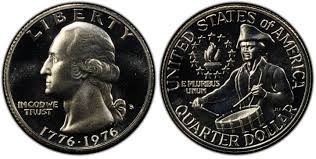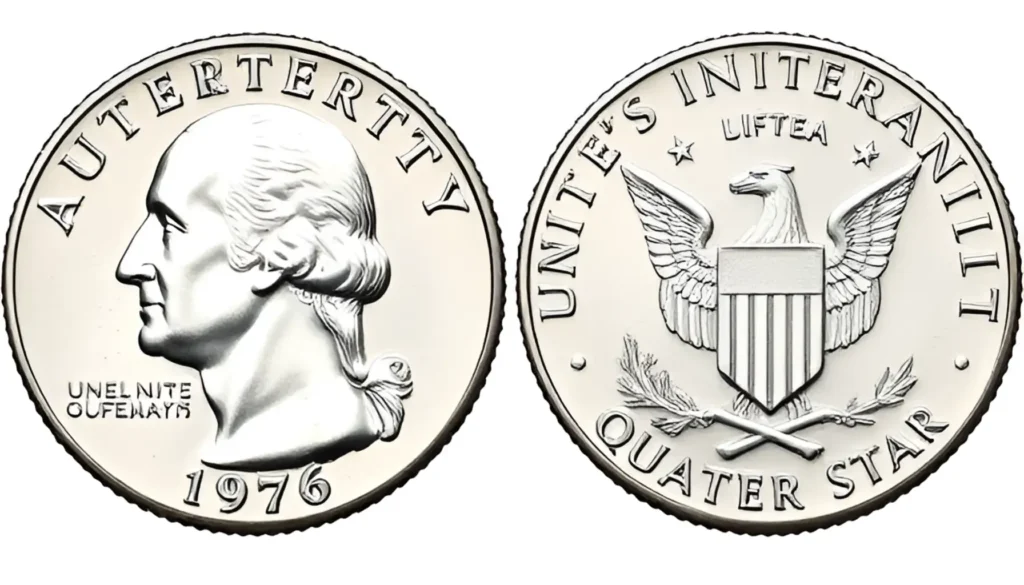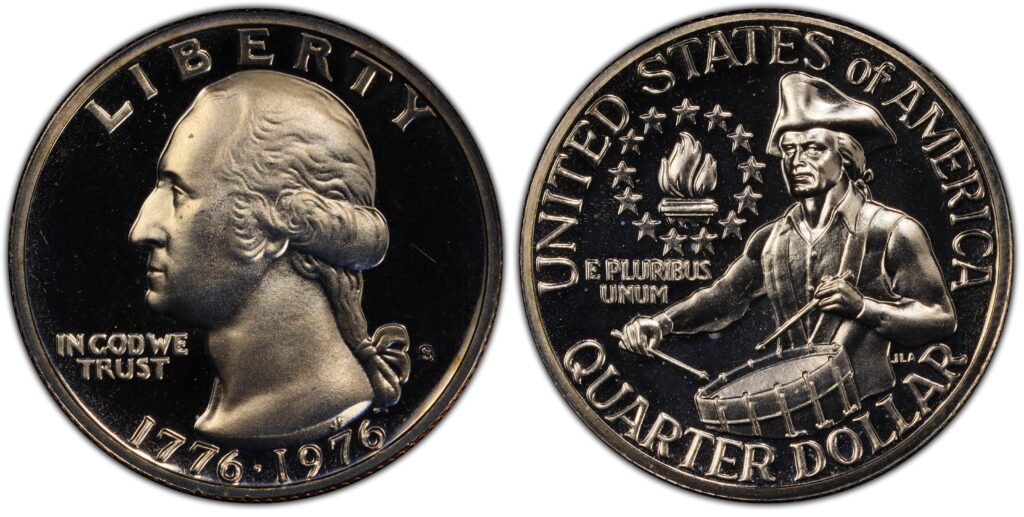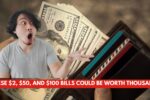In 1976, the United States celebrated its 200th anniversary with a unique coin design for the quarter dollar. These Bicentennial quarters, featuring a colonial drummer on the reverse and dual dates “1776–1976,” were issued in large numbers — over 1.6 billion in total.
But while most are only worth face value, a select few rare varieties can command prices in the thousands, especially among collectors and numismatists. Here are the top 3 Bicentennial quarters you should look for in your change — they may be worth far more than 25 cents.
1. 1976-S Silver Proof Bicentennial Quarter
What makes it valuable?
This quarter is part of a special proof set minted in San Francisco and made of 40% silver, unlike the standard copper-nickel clad coins. These were never released into general circulation and were intended for collectors, but some have found their way into public hands.

How to identify:
- Look for the “S” mint mark below Washington’s neck.
- It has a noticeably different shimmer due to its silver content.
- Often found in sealed proof sets or may show less wear than regular coins.
Value:
Depending on condition, especially those graded PR70 by PCGS or NGC, these coins can fetch up to $5,000 or more. One pristine example sold for nearly $13,500 in auction.
Learn more about coin grading: Professional Coin Grading Service (PCGS)
2. 1976-D Minting Error Bicentennial Quarter
What makes it valuable?
Errors during the minting process increase a coin’s rarity and collector interest. These errors may include doubled dies, off-center strikes, or misaligned features. While errors are not unique to 1976 quarters, the combination with a commemorative year makes them particularly prized.

How to identify:
- Look for the “D” mint mark from the Denver Mint.
- Check for doubled lettering, especially in “LIBERTY” or “IN GOD WE TRUST.”
- Other signs: visible off-center designs, missing elements, or misprints.
Value:
The value of error coins varies depending on the type of error and coin condition. Some rare Bicentennial error quarters have sold for over $5,000, while others fetch hundreds on platforms like eBay or through professional dealers.
3. 1976-S Clad Proof Deep Cameo Quarter
What makes it valuable?
Even though it’s not made of silver, the Clad Proof Deep Cameo variant of the Bicentennial quarter stands out due to its finish. Deep Cameo proofs are known for their frosted design set against a mirror-like background — a striking aesthetic that collectors love.

How to identify:
- “S” mint mark confirms it’s from San Francisco.
- Strong contrast between the frosted image and polished fields.
- Often found in uncirculated proof sets.
Value:
Graded examples in PR69 or PR70 can sell for $500 to $3,000 depending on demand and quality. Their value has risen as more collectors seek flawless examples of this historic coin.
For more on proof coins: Numismatic Guaranty Company (NGC)
Why Are Bicentennial Quarters Gaining Value?
Most Bicentennial quarters are still only worth their face value, but scarcity, condition, and historical appeal have made certain types extremely sought after. With a growing interest in coin collecting — particularly during economic uncertainty — these special quarters have become a surprise asset for lucky holders.
Tips for Checking Your Quarters:
- Use a magnifying glass to examine details closely.
- Weigh the coin – silver coins are heavier (about 5.75g vs. 5.67g).
- Use tools like CoinTrackers or NGC Price Guide to compare prices.
Final Thoughts
It’s easy to dismiss change as trivial, but a single coin could change your fortune — literally. Whether inherited from family or casually found in a vending machine tray, it’s worth giving your Bicentennial quarters a second look.
While many will be common, the rare few with errors, silver composition, or deep cameo finishes could be worth thousands. For those interested in selling or appraising such coins, consulting a certified numismatist or visiting a trusted dealer is a smart step.
This article has been carefully fact-checked by our editorial team to ensure accuracy and eliminate any misleading information. We are committed to maintaining the highest standards of integrity in our content.


